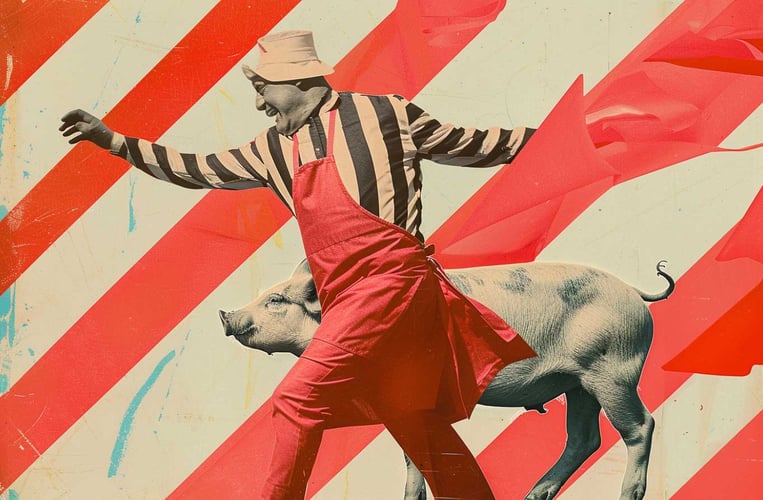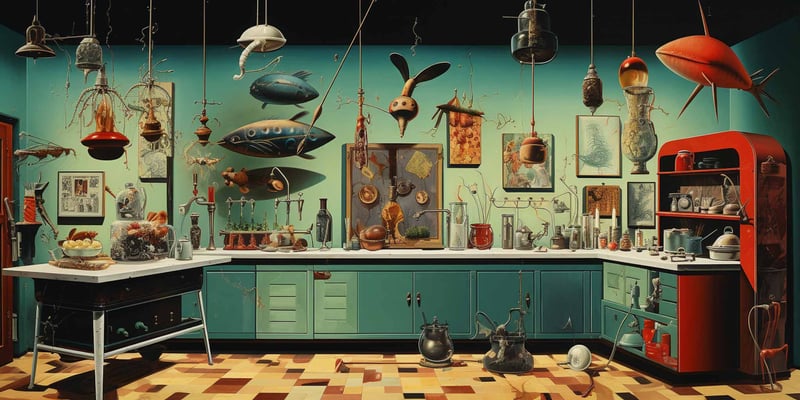Seven years ago, I moved to Scotland. Any foreigner who ever moved there knows that, on top of the copious amounts of whisky, wind and rain, Scotland also greets you with the question: ‘so, do you like haggis?’. As a philistine, I equipped myself with a categorical ‘no’, until I tried the Scottish delicacy once, twice, three times and, by now, more times than I can even count. I learned that it is made by finely chopping lamb’s offal (heart, lungs, kidneys, liver) and incorporating that with oatmeal and spices, then steaming the mixture inside a sheeps’ stomach. Could that explain the categorical ‘no’ that preceded my culinary adventure? And why is it, that we are instantly disgusted when we hear heart, lungs, kidneys or liver?
My chef friend Igor Kuznetsov has one answer:
“Why should some parts be disreputably called… offal? One of my Tokyoite friends’ father has run a kushiyakiya (a restaurant that serves grilled skewers) for over 40 years. Skewers of heart, gizzards, liver and tongue. His cow’s heart sashimi with a bit of sesame oil, soy sauce and scallions was one of the best things I have ever eaten. Old Ebe san told me ‘Humans have forgotten what’s best for them. When the lion hunts an antelope down – he goes straight for the guts, because the lion still knows.'”
By now, it is common knowledge that our current consumption of meat is unsustainable – for our health, for our planet and for those who still believe in a fair and ethical society. However, it is not my purpose to preach a vegan or vegetarian diet and I accept my obsession for cheese and beef tartare as unjustifiable, guilty pleasures.
I, for one, am a believer in eating diverse, nutritious, sustainably sourced, ideally local and seasonal food. Less, but better animal produce. That’s a long list, isn’t it? As a wise Tinder match once reproached to me during a conversation on the topic, it would be classist to expect that everyone should and can afford to consume only organic produce from the farmers’ market.
Indeed, one should be able to consume both healthily and sustainably from a regular supermarket. Yet, the latter will provide you with goods that are – on average – less (naturally) tasty, less (naturally) nutritious and less sustainable. We’re mostly talking about large-scale food production, after all! Is it a privilege or a basic human right to have access to good food? But I’m not here to push an agenda of equality and justice for all, no matter how much I wish it were the case. And supermarkets do have their contribution to helping local, sustainable producers too.
“There is a human right for cheap meat, right? More, and more, and more of it! Because, you know, we’re humans. It’s all about the humanity of it all. The cheaper the meat, the more human it is! I’m gonna get stuffed now. For purely humanitarian reasons”, is what Severin Corti, one of Austria’s admired food critics wrote on his Instagram, together with a photograph of an ad for discounted chicken – two whole chickens, ready for roasting, at just €2.99.
With a share of the price that goes back to the supermarket, the distribution centre and the factory those chickens surely came from, what is the actual worth of those animals? Through industrial practices, genetic engineering and a quantity-over-quality approach, a broiler chicken can be as cheap as ¢20-30 to produce, and that covers feed, labour and infrastructure.
Even if wealthy countries consume less meat every year, the opposite is true for poor countries, as they get richer. Global meat consumption has been growing at a relatively steady rate of 3% yearly and, when the demand increases, the industry will find ways to generate more supply, it’s basic economics, right? But I’m not writing this article to tackle the poor distribution of food around the globe, nor am I here to discuss why we waste a third of the food we produce, year after year, while two billion people are starving.
The coronavirus outbreak at the Tönnies abattoir in Germany unveiled unethical working practices that seemed unimaginable in Europe, in this day and age. If we are a long way from treating humans with dignity and respect, what about the animals we eat?
In a society disinterested in these matters, affluence prevails, even when just apparent. Some restaurants have discovered the key to business success: stuff the €2.99 chicken with foie gras and throw some truffle onto those mashed potatoes. After all, doesn’t the humble potato turn into royalty with a crown of truffle on top? As for the giblets, throw them into the bin. Giblets are for the poor and no one is poor at this restaurant, or else why would there be truffle and foie gras?
I grew up in post-communist Romania. Fried brains, tongue with olives in tomato sauce and tripe soup were some of my favourite dishes as a child – a culinary tabula rasa, devoid of doubts and societal bias. Not for a single moment did I think of these as unusual ingredients. It took me a visit to my butcher when I was still in Edinburgh, to learn that brains are impossible to find in the UK, with stricter food safety regulations in place after the mad cow disease outbreak. With lost faith, I took a flight back to Romania, where my mum awaited me with the much desired brains. Once more, I survived – and not only that, but was I happy, too!
The closest I got to experience a traditional countryside life, was when my mum decided to raise two chickens in our garden – that phase did not last long. Because my whole family was city-based, I missed out on a lot of traditional practices which, with urbanisation, are slowly lost. One of them was the killing of the pig, a custom that I had the chance to attend once. Its purpose is to bring family and friends together to slaughter the pig for Christmas. Once the procedure is finished, parts of the shoulder and neck are fried on an open fire. The name of the dish, ‘pomana porcului’ translates to ‘the pig’s offering’. The animal is then portioned and not a single part thrown away. Some pieces are reserved for roasting, others for soup, others for all sorts of sausages, and everyone attending gets their share. Even the skin receives its place on the Christmas table, sliced thinly and pan fried just a little, then sprinkled with salt.
“The most important thing is to eat the whole animal. If people would be willing to experience killing an animal, then they would respect it more and eat it all. The problem with the industry is that we don’t know what animals even look like anymore. Everyone wants more and more meat, but the moment you suggest slaughtering a calf or a cow, nobody wants to see it”, says Lukas Mraz, from Vienna’s Mraz und Sohn.
As I sit with a glass of wine on a late Sunday night, waffling to Igor about ethics, food and killing animals respectfully, he stops me: “respect for what, for the killing of the animal? What about respecting it while it’s alive too, not just dead? And what is respect anyway?”. My mind wanders: do we spend so much time fearing death that we forget about life itself? Should we acknowledge our privilege to be able to consume meat in the first place? Is it a privilege? Is it a right? Is it our animal instinct? Here I am, stuck in my usual philosophical rabbit-holes, feeling crushed by the Socratic paradox of knowing that I know nothing, once again.
Respect, like many other human concepts, comes in many shapes and forms. Respect for the animal when it’s alive, by letting it roam freely and feed healthily; when it dies, by killing it in humane ways; when it’s dead, by consuming every part of it. But what about the person killing it?
Mihai Toader, a young and ambitious Romanian chef on a quest to preserve and revive culinary traditions, tells me: “a butcher can share stories about the animal, show you various cuts and, most importantly, share tips on how to get the most out of what you buy. It is a beneficial relationship, on both sides.”
“My family have been butchers for 250 years, I myself, for almost 40. I do it with the pride of an ancient art. An art, which in ancient times, priests took care of, to resolve the terrible dilemma of killing to eat, taking on the weight of killing so that the community can eat” is what Dario Checchini, the Italian butcher whose story was featured on the Netflix show Chef’s Table, says in his talk at the famous MAD Symposium. “We [butchers] need to have respect [for the animal], not to kill indiscriminately and wastefully. But we need knowledge as well, because we must use everything in the best way possible”, he continues.
“In a butcher’s family, you don’t eat the best cuts. In a butcher’s family, the kids are raised eating what others don’t want to eat”, adds Dario Checchini. With machines taking over butchery in industrial meat production, and perfectly portioning the muscle meat that all of us, omnivores, value, just what happens to the rest of the animal? An article in The Atlantic has the much dreaded answer: quite often, what’s not appetising enough to the fastidious Western palate (and that accounts for about 60% of the animal) turns into waste.
Niklas Peltzer from Meinklang, a farm and wine producer in Austria tells me about their biodynamic practices. Caring for the entire ecosystem as a living organism and understanding the interrelations between its various components has been the basis of this philosophy, since Rudolf Steiner popularised it in the 1920s. “This is what is strongly missing in our society and modern life – the pure relation to nature and everything that exists, and the feeling of responsibility towards it”, continues Niklas.
At their farm, they only slaughter an animal if they know they can sell it all. “We try to sell bigger parts to restaurants, not just the fine, already pre-cut pieces. That sometimes means half a pig, or half a cow. That way, the chef is more connected to the meat, the way we farm, and encourages them to focus on parts other than just the fillet. We also only work with people who care as much as we do about whole animal usage and how the animal was raised and slaughtered”, adds Niklas.
Meinklang are currently building a slaughterhouse next to the grasslands in order to bring the farmers and the livestock together, with plans of producing sausages, ham, as well as other canned goods such as liver pâté and Beuschel, a traditional Austrian dish made from offal.
“I think you cannot change people overnight, you have to lead by example. We are living in a really materialistic world and people have to feel the connection to the nature and the animals again. It is already happening, but at a slow pace. I hope it isn’t too late”, replies Niklas when I ask him how he thinks the industry can shift perceptions.
When the idea for this article came about, I was in the middle of cooking chicken gizzards, feeling proud that, instead of using chicken thighs, I was frying one of the undervalued ingredients in my newly seasoned cast iron skillet. I paid €2.50 for a whole kilogram of gizzards at the farmers’ market, thinking that giblets were going to save me from the bankruptcy that succeeds my regular visits to various cheesemongers around Vienna.
Even within the organ-meat-cooking camp, some of us see things differently:
“Cheap meat cuts? First of all, why should price differences between different parts of the animal be legitimate at all, if they are similarly nutritious? One animal, one life, one price. I would pay the same amount for any part and it should be the price of the fillet”, says Igor.
Whether the price difference today is justifiable or not, one thing is clear: organ meats are part of the identity of many cultures, not only through traditional dishes like Scottish haggis, Peruvian grilled heart skewers, Chinese innards stews and Greek kokoretsi. Aspics chilled in flamboyant copper moulds decorated the tables of the wealthy before gelatine made setting liquids a foolproof task – ears, feet and other collagen rich parts of an animal were used to make those. An American upper class restaurant menu from 1865 features sweetbreads, calf’s brain on toast, tongue and liver.
Is it that, even within the organ meats realm, there is a hierarchy, where some pieces are more noble than others? Is it a natural inclination of our palate to prefer some, over others? Since my universal friend, Google, couldn’t help much, I turned to Cosmin Dragomir, a Romanian food historian. According to him, in Romania, cookbooks have consistently featured organ meats. “When we’re talking about books that are a hundred, two hundred or three hundred years old, we’re talking about a restrained audience: people who bought books, who knew how to read, or who would pay others to read to them”.
Dr Eleanor Barnett, PhD in Food History and owner of the much-loved Instagram account Historyeats, tells me: “it is particularly interesting that offal went through a stage of being seen as appropriate for the middling elites in the 16th Century, but was back to being cheap and associated with the poor by 1800.”
Without a solid empirical foundation, I tend to believe that hierarchies of flavour and texture have always existed, despite sporadic trends, based on the preferences of the masses. After all, not many of those who appreciate a fillet would also eat the guts, but most of those who find guts palatable, will also happily indulge in a fillet and… de gustibus non disputandum est.
It doesn’t take a genius to cook a steak and roast a chicken. Organ meats, however, require more time, patience, and knowledge. Plus, they do not always come with the universally applauded tender quality of muscle meats. Their taste too, can be more intense – nothing that the Western palate would not handle with a little conscious training. In The Art & Science of Foodpairing (my culinary bible), the authors, Peter Coucquyt, Bernard Lahousse and Johan Langenbick, explain that we can hack our liking of ingredients by introducing them, in small quantities, alongside ingredients that we enjoy. Consider the same to have been the case with all the ingredients you used to look at with animosity as a child, but would feast upon in Gargantuan quantities today.
Reforming the pervasive nature of our Western palate means challenging ideals of flavour and texture, just like we challenge beauty standards. A real shift requires a panoptic understanding of our complex food system, which, before all else, involves some deal of curiosity. “Educating ourselves on eating sustainably is a must for the future of our planet”, says Mihai Toader – but where does education start?
The successful efforts to introduce organ meats into the everyday diet in the US during WWII are an example of government intervention to change perceptions. Yet, it was a meat shortage that pushed the government to act in the first place and, because the campaign to consume what they called ‘variety meats’ was closely linked to war propaganda, the results did not last long.
I, for one, have always believed in the impact of communities upon the government and the industry. After all, it’s all about the ubiquitous concept of supply and demand. If chefs, farmers, food critics, gourmets, food bloggers and social media ‘influencers‘ changed their approach just slightly, the nose-to-tail trend could turn into a movement. And, as a result of this romanticised ideal, the price of ‘premium’ cuts would also fall.
“I would love there to be more organ-meat-based restaurants, but I believe that will happen soon”, says Alex Dumitru, head chef and owner of Anika restaurant. As a compatriot of mine, his childhood’s culinary highlights revolve around organ meats too: his mother’s chicken heart, or pork kidney stew, together with other delicatessen made from various seemingly scandalous cuts of pork around Christmas time.
Andrei Isac, owner of Arosticini and Ou, tells me about his nose-to-tail pandemic project, in which he supported his mutton supplier by ordering the whole animal and collaborating with up-and-coming chefs to create dishes with all parts, no matter how noble or ignoble they are perceived. “The result was a cook-at-home kit in which everyone played their part: the local butcher, the chef and the end consumer, who would have to finish the dish at home, following the instructions delivered with the kit.”
Since he opened Noble Savage, Igor’s menu has always featured organ meats that took the guests out of their comfort zone, but sang an ode to a just appreciation of every part of the animal. Testicles, sweetbreads, tongue, fish sperm, heart and gizzards are just a few examples of ingredients in his menu.
In the gastronomic universe of #foodporn, could organ meats find their place too, amongst dubious food hacks, out-of-season fruit smoothie bowls, lockdown sourdough crumbs, trending citrus fruits and the ever-dwelling avocado toast? Are organ meats surreptitiously kept in our memory, rather than in that of our phones and cameras? And, if topped with caviar, or foie gras, would they be worthy of an Instagram post?
As I prepare my gizzards and chop the offal to make my own haggis, I beg for absolution. For my life-long consumption of scrumptious beef tartare and succulent fillets, and rare T-Bone steaks, and for the fact that I have never killed an animal myself.
(this blog post was originally published in Feb 2021)



